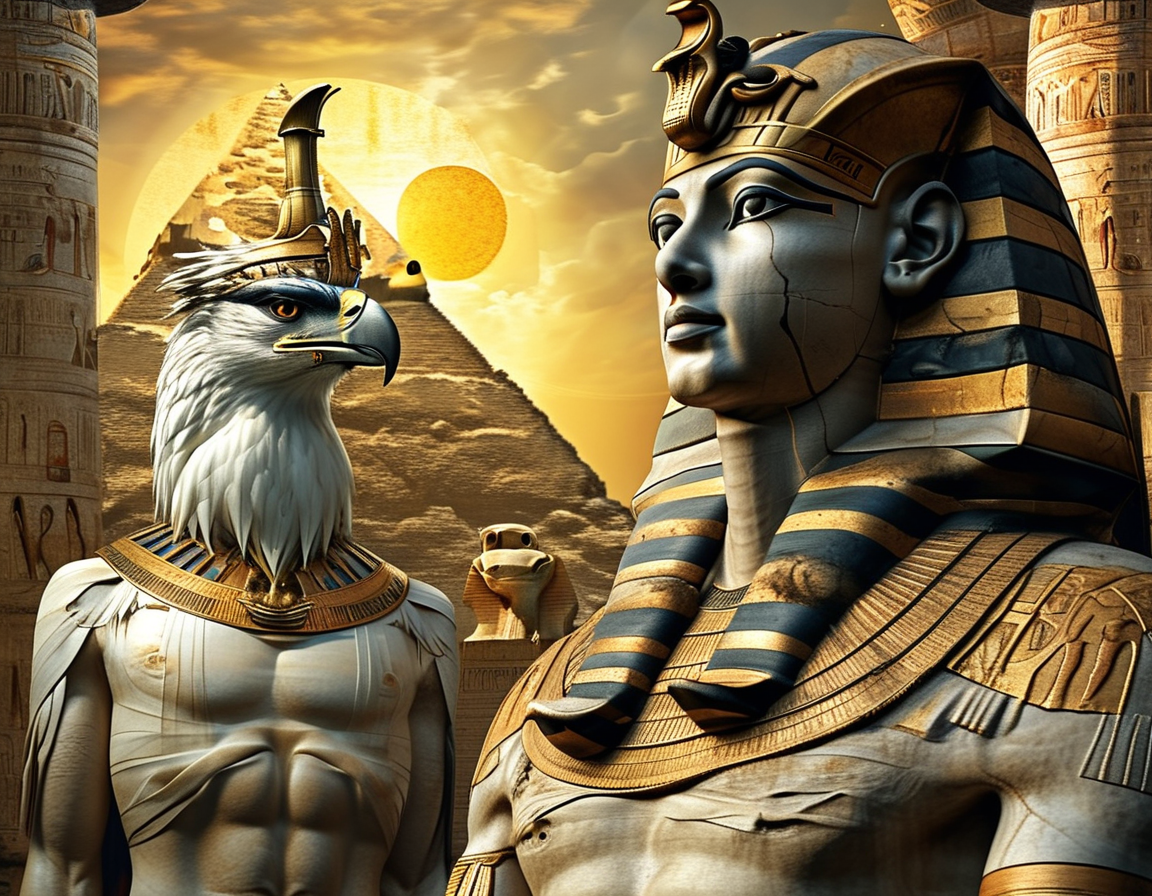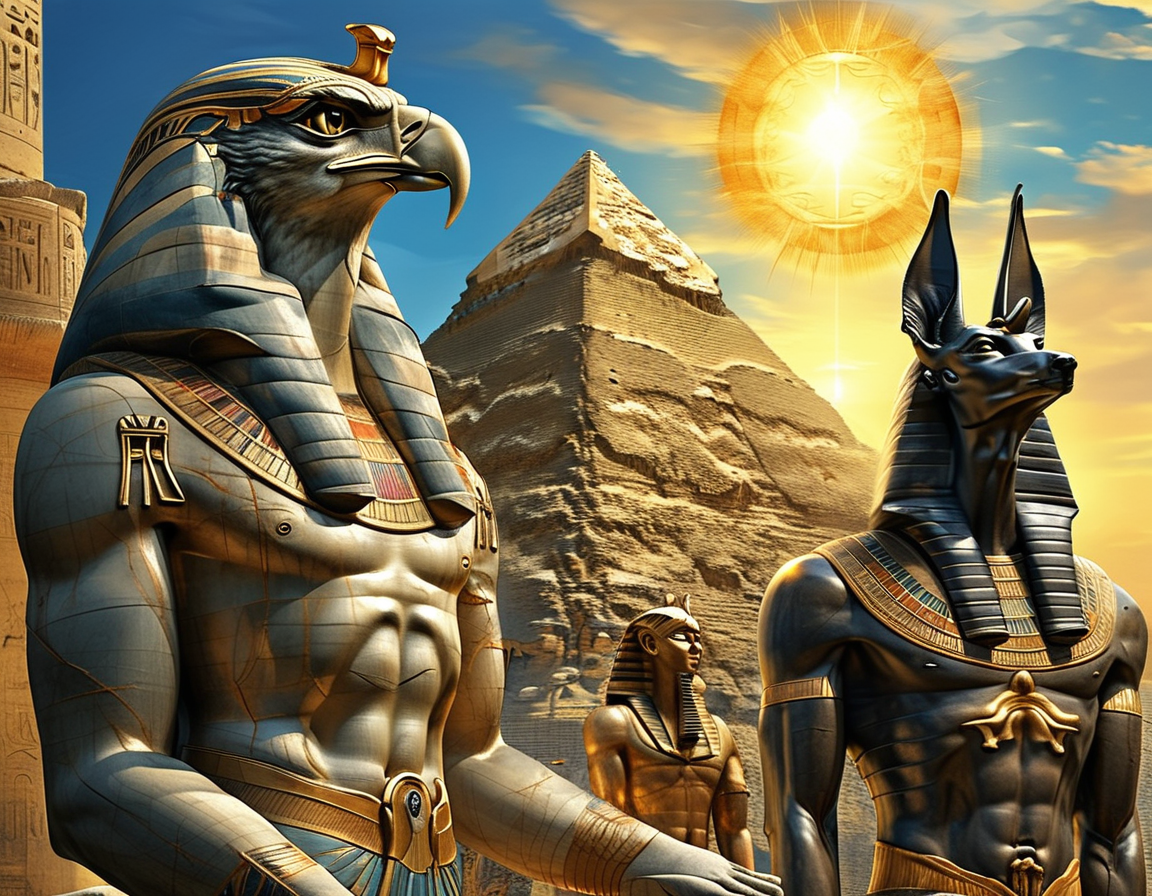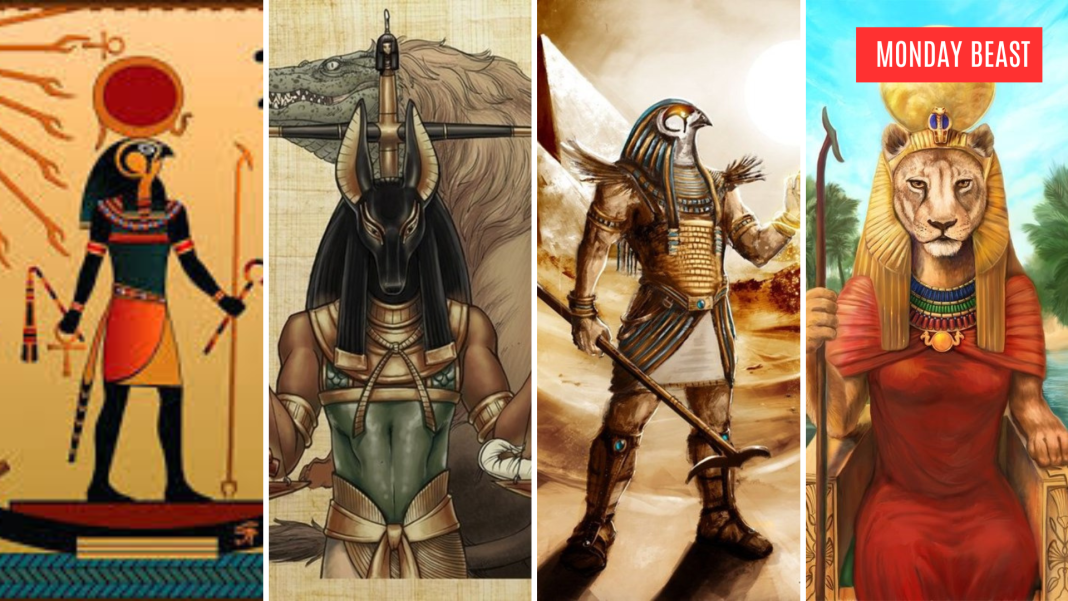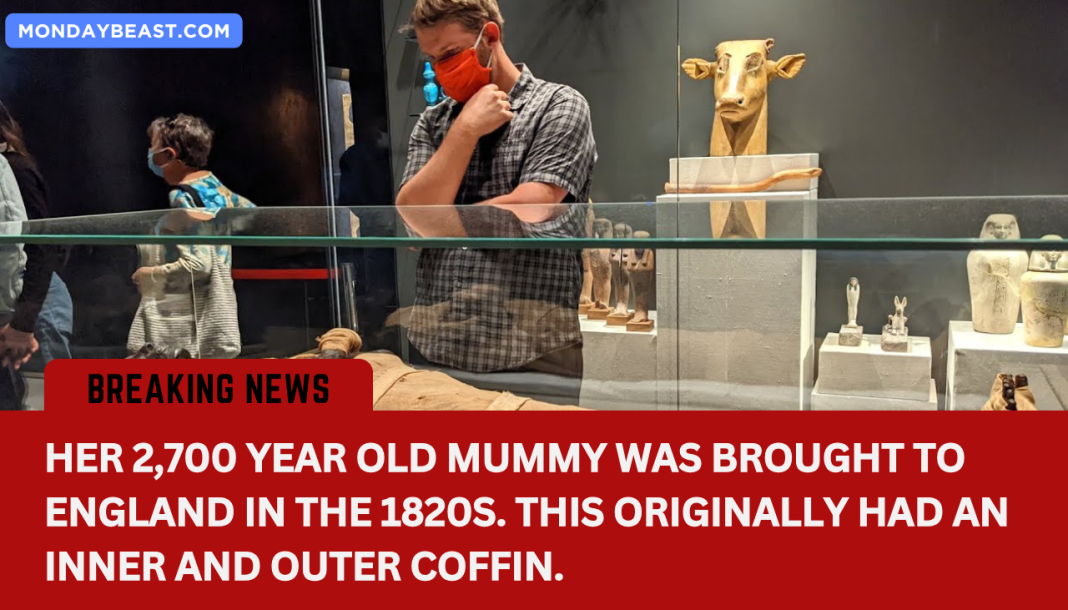Introduction to Egyptian Deities
Why do we care about ancient gods? Perhaps because they hold reflections of human experience, both beautiful and tragic. The Egyptian pantheon is rich with stories that shape our understanding of life, death, and everything in between.
In modern times, we often seek meaning in rituals or connections with something greater than ourselves. The ancient Egyptians found this in gods and goddesses—figures who embodied their values, hopes, and fears. Each deity was not simply a statue or a name but a force that influenced their daily lives.
Ra – The Supreme Sun God

Have you ever watched the sunrise and felt a surge of energy? The Egyptians personified this feeling in Ra, the god of the sun. Ra was more than just a deity; he was seen as the foundation of all life. He journeyed across the sky in a golden barque, providing light and warmth.
Imagine standing in the early morning sun, warmth washing over you. This was the essence of Ra—the bringer of light. Often depicted with the head of a falcon and a sun disk, Ra’s symbolism resonates with themes of creation and order. He was the king of the gods, a figure who inspired awe.
Mythology tells us that Ra created not only the heavens but life itself. At night, as the sun set, he faced chaos. This battle in the underworld symbolizes both life’s struggles and our eventual rebirth. Who among us hasn’t felt exhausted at the end of a long day, only to rise refreshed at dawn? Ra encompassed this cycle.
Osiris – The God of Resurrection

What does it mean to live forever? Ancient Egyptians pondered this through Osiris, the god of the afterlife. Osiris was not just a deity of death but also one of resurrection and hope. Picture him as a mummified king with a crook and flail, embodying authority even in death.
Osiris’s story is one of tragedy and rebirth. His betrayal by Set, his own brother, is a chilling reminder of that jealousy can destroy. But then, his loving wife, Isis, used magic to resurrect him. Isn’t that a beautiful image of love conquering all?
He also judged the dead. Imagine your heart weighed against a feather, representing truth. Osiris’s judgment determined one’s fate in the afterlife. His story resonates deeply as we reflect on our lives and the legacies we leave behind.
Isis – The Protector and Mother

Is it possible for love to transcend death? Isis, the goddess of magic and motherhood, showed us it is. Often illustrated with a throne-shaped crown and cow’s horns, she embodies nurturing and strength. Her intimate connection with Osiris cements her as a symbol of love.
After Osiris’s death, she used her powerful magic to bring him back. Isn’t that the ultimate act of devotion? Her story speaks to the powerful bond between partners and mothers. It’s a reminder of how love can heal and transform.
Isis didn’t just mourn; she fought fiercely for her son, Horus. Protecting him from Set, she led him to reclaim his rightful throne. The narrative is packed with themes of courage, exemplifying the notion that darkness is often countered by light. Isn’t that something we all aspire to?
Anubis – The Guardian of the Afterlife
What role does memory play in our lives? Anubis, the jackal-headed god, challenges us to consider preservation. He was the overseer of mummification, ensuring that loved ones were properly prepared for their journey into the afterlife. Can you imagine the comfort this brought families?
Anubis’s role went beyond mummification. He guided souls to their next destination, acting as a protector of the dead. We often worry about what happens after we’re gone, hoping our memories live on. Anubis assured the Egyptians of this transition, marking it with dignity.
He also played a pivotal part in judgment, weighing hearts against Ma’at’s feather. This process held individuals accountable for their earthly actions, posing an interesting question: How do we measure our own lives? Anubis reminds us to live with intention and courage.
Conclusion
The gods of ancient Egypt give us rich insights into human existence. Their stories speak to us through time, weaving a surreal tapestry of faith, morality, and love. The lessons remain relevant—reminders of our desires for connection and understanding in a complex world. Exploring these ancient myths can thus illuminate our modern lives. What might we learn from ancient beliefs, and how can they shape our understanding of what it truly means to live?




